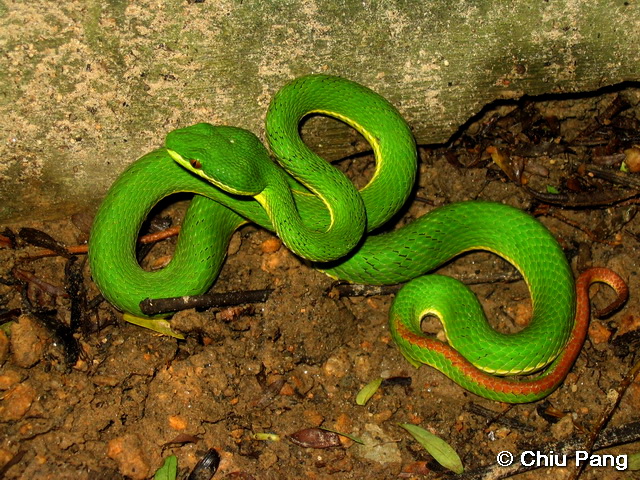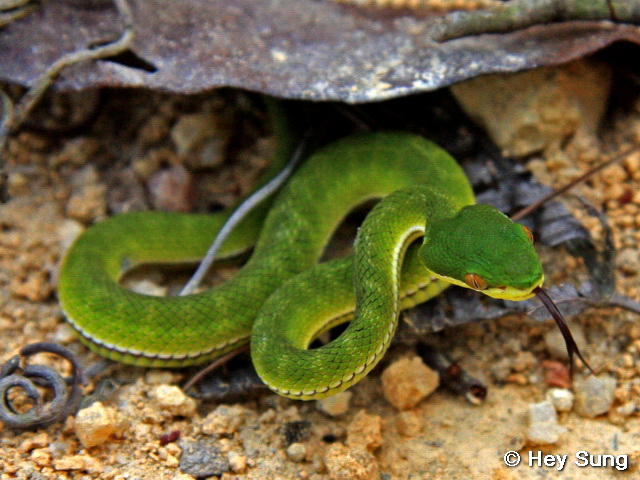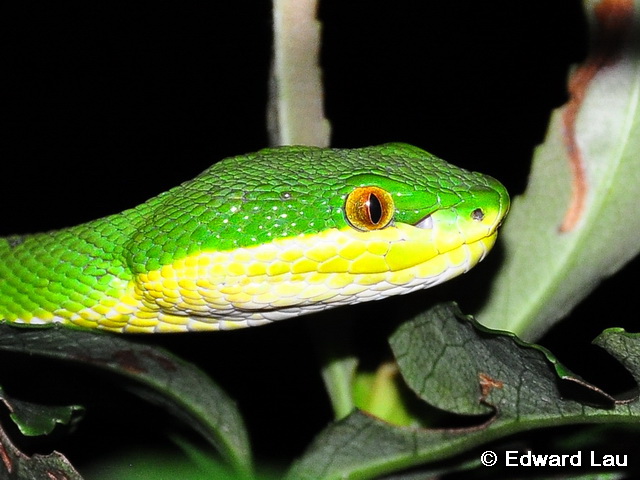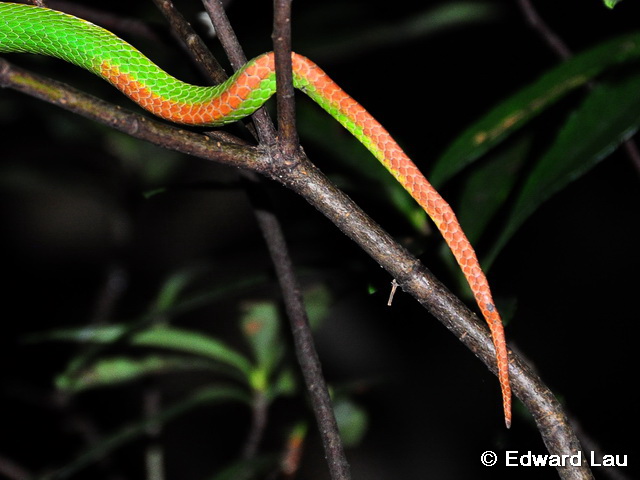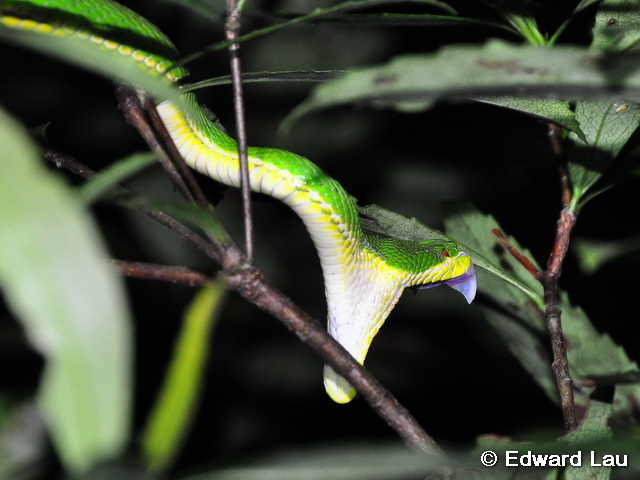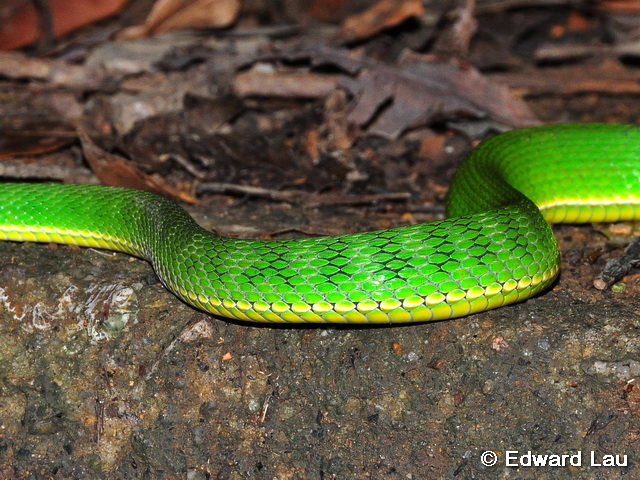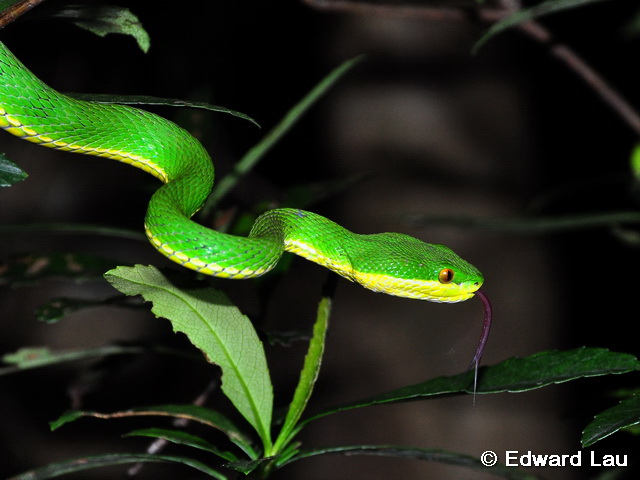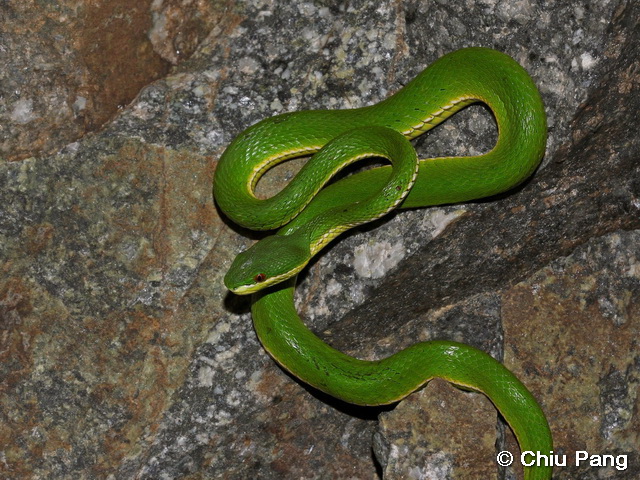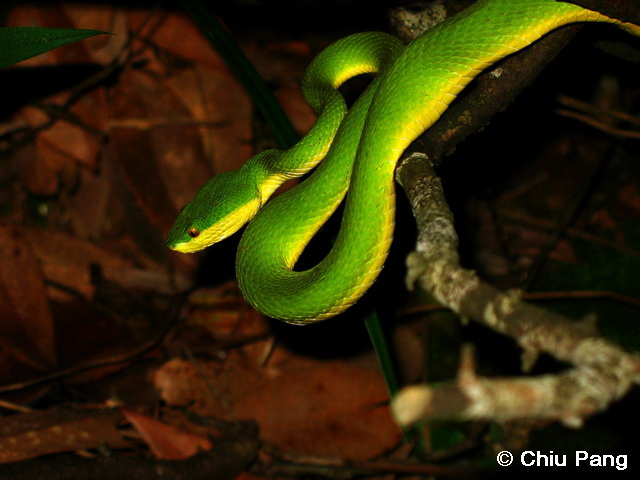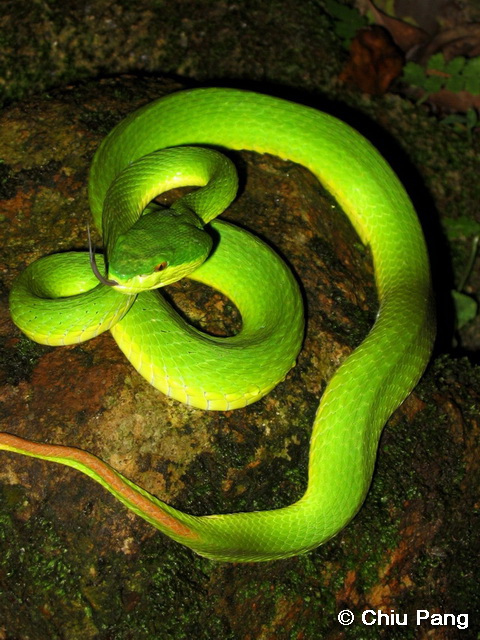Trimeresurus albolabris (Gray, 1842)
Bamboo Snake 青竹蛇
(Venomous)
Suborder
Serpentes 蛇亞目
this line is white in males.
Skin with dark crossbands on dorsum; bands visible only when snakes inflates or after a large meal or in gravid females.
Ventrals yellow, without any markings.
Head green and strongly triangular. Eyes orange-yellow; with vertical, slit-like pupil.
A heat-sensing pit between eye and nostril. Two large, hinged fangs at the front of upper jaw.
Labials and side of neck yellow. Tail with a reddish-brown streak dorsally.
Head scales granular. Dorsal scales moderately keeled.
Hong Kong's most common venomous snake, present at all altitudes.
Occurs in virtually any terrestrial habitat except urban areas and areas of extensive fish ponds and mangrove swamps.
Particularly common in low hilly areas with shrubland and grassland and on edges of cultivated fields.
Rare in dense forest. Occasionally climbs bushes or small trees, but usually stays on the ground.
Sometimes found hiding beneath objects and often inside catchwaters.
Bite is painful and causes much swelling, but death is virtually unheard of in healthy people.
Average litter size is 12. Young snakes 15-20 cm long at birth.
Ranges from northern India to central and southern China, south to Indonesia.
